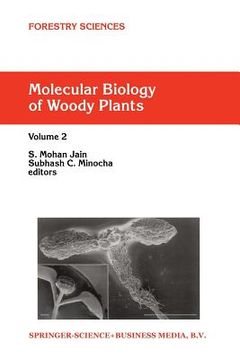Share
molecular biology of woody plants volume 2
S. M. Jain
(Illustrated by)
·
S. C. Minocha
(Illustrated by)
·
Springer
· Paperback
molecular biology of woody plants volume 2 - Jain, S. M. ; Minocha, S. C.
Choose the list to add your product or create one New List
✓ Product added successfully to the Wishlist.
Go to My Wishlists
Origin: U.S.A.
(Import costs included in the price)
It will be shipped from our warehouse between
Friday, July 19 and
Friday, July 26.
You will receive it anywhere in United Kingdom between 1 and 3 business days after shipment.
Synopsis "molecular biology of woody plants volume 2"
Woody plants belong to various taxonomic groups, which are heterogeneous in morphology, physiology, and geographic distribution. OtheJWise, they have neither strong evolutionruy relationships nor share a conunon habitat. They are a primaIy source of fiber and timber, and also include many edible fruit species. Their unique phenotypic behavior includes a perennial habit associated with extensive secondary growth. Additional characteristics of woody plants include: developmental juvenility and maturity with respect to growth habit, flowering time, and morphogenetic response in tissue cultures; environmental control of bud dormancy and flowering cycles; variable tolerance to abiotic stresses, wounding and pathogens; and long distance transport of water and IRltrients. Woody plants, particularly tree species, have been the focus of numerous physiological studies to understand their specialized functions, however, only recently they have become the target of molecular studies. Recent advances in our understanding of signal transduction pathways for environmental responses in herbaceous plants, including the identification and cloning of genes for proteins involved in signal transduction. should provide useful leads to undertake parallel studies with woody plants. Molecular mapping techniques, coupled with the availability of cloned genes from herbaceous plants, should provide shortcuts to cloning relevant genes from woody plants. The unique phenotypes of these plants can then be targeted for improvement through genetic engineering.
- 0% (0)
- 0% (0)
- 0% (0)
- 0% (0)
- 0% (0)
All books in our catalog are Original.
The book is written in English.
The binding of this edition is Paperback.
✓ Producto agregado correctamente al carro, Ir a Pagar.

